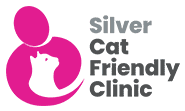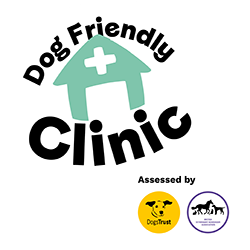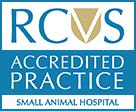Animals, like human beings, are made up of trillions of cells, all with different specialised functions. Cells are the building blocks that make up tissues and organs such as our skin, heart, brains and digestive system. To keep these organs working, new cells are needed every day; to meet this requirement cells are constantly growing and copying themselves to replenish any damaged cells in the body.
Loss of control of the body’s normal growth and repair functions can produce many more cells than necessary. This physical collection of cells is known as a tumour. Tumours can be benign or malignant. Benign tumours are relatively well-behaved and can be removed, usually with surgery, without much risk of returning. Cancer is when the cell growth results in a change to the cells which allows it to survive in locations where it should not, behave aggressively overtaking normal cells and even spread into other adjoining organs or tissues, where it does not belong. These malignant tumours have the capacity for regrowth or spread.
Cancers happen because of problems that build-up in the DNA of cells. The DNA is the template which cells use to make copies of themselves. When these processes go wrong, cells create multiple copies without restriction and behave abnormally.
These problems can occur in any cell in the animal’s body, and as a result you can have tumours and cancer in any part of the body, just like with people. It is important to remember that no two tumours will ever be exactly the same. Also, cancers that arise from different types of cells can have very different behaviours. Some cancers can be curable, whereas others can be rapidly fatal.
In many cases we do not know why this problem in the DNA occurs: in humans, we know that certain factors such as cigarette smoking and sun damage can contribute to it, however, there is limited evidence in animals. Many owners worry that cancer may affect a family line or a whole litter in their pets. While it is true that certain breeds can be more predisposed to tumours than others, this does not mean that if you dog or cat has cancer, it’s offspring or siblings will develop cancer. As with people, the vast majority of cancers occur randomly and are caused by a mixture of the animal’s DNA and the things they are exposed to during their life.
In the human medicine setting, the diagnosis and treatment of tumours is performed by a specialist doctor referred to as an ‘Oncologist’. Most vets who work with small animals are a GP, they treat multiple diseases and manage ongoing conditions (like blood pressure and diabetes). GPs have the option to refer to a Specialist, usually in a hospital setting, when necessary. This is the same in veterinary medicine also.
At Wear Referrals in County Durham, every patient that your vet refers with a suspected diagnosis of cancer, is seen by a Veterinary Oncologist. Each Veterinary Oncologist has undergone further specialist training in both the diagnosis and treatment of cancer in dogs and cats.
The process of becoming a Veterinary Oncologist is similar to becoming a Consultant Oncologist in human medicine: following graduation from vet school we spend time in general practice before undergoing a comprehensive three-year training program (or Residency) at a specialist oncology training centre, seeing hundreds of animals with cancer under the supervision of other specialists. During this time, we received extensive training on both the diagnosis and treatment of a variety of cancers in dogs and cats. We also have to take multiple examinations to demonstrate our expert knowledge in the area of Veterinary Oncology.
Aaron is the Head of Oncology at Wear and is a recognised specialist by both the Royal College of Veterinary Surgeons and the European College of Veterinary Internal Medicine.






